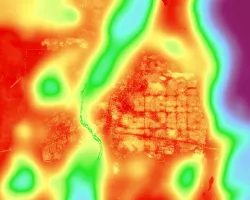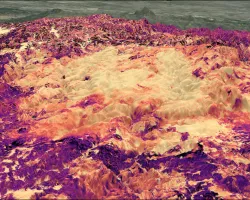Puget Sound Water Resources (Summer 2022)
Team: Mike Hitchner (Project Lead), Lily Oliver, Sofia Fall, Lyndsay Zemanek
Summary: Bull kelp (Nereocystis luetkeana) is a critical component of nearshore ecosystems in the Puget Sound region of the Salish Sea. The Port of Seattle and Washington State Department of Natural Resources (DNR) have identified possible declines in bull kelp extent and changes in its distribution throughout the Central Puget Sound near Seattle, Washington. Bull kelp losses threaten critical ecological services and marine habitat, as well as important cultural resources. However, these changes are not well tracked or understood due to the expensive and time-intensive nature of traditional kelp canopy monitoring methods. The Port of Seattle and Washington DNR partnered with the NASA DEVELOP team to explore the feasibility of using Earth observations between 2016 and 2021 obtained from Landsat 8 Operational Land Imager (OLI) and Sentinel-2 MultiSpectral Instrument (MSI) as a potential tool to monitor and map bull kelp. Our team identified a variety of challenges that need to be addressed before this approach can be utilized as an effective means for identifying or mapping nearshore urban kelp beds. We found that neither Sentinel-2 nor Landsat 8 significantly differentiates between kelp and no-known kelp using the Normalized Difference Vegetation Index (NDVI) or Normalized Difference Red-Edge Blue (NDREB). While the tidal and current filtering methods discussed here may be beneficial for identifying promising single image dates for kelp classification, the filters we used reduced the number of images each year to the point that modeling or mapping yearly kelp extent or creating time series of kelp did not appear to be feasible.



